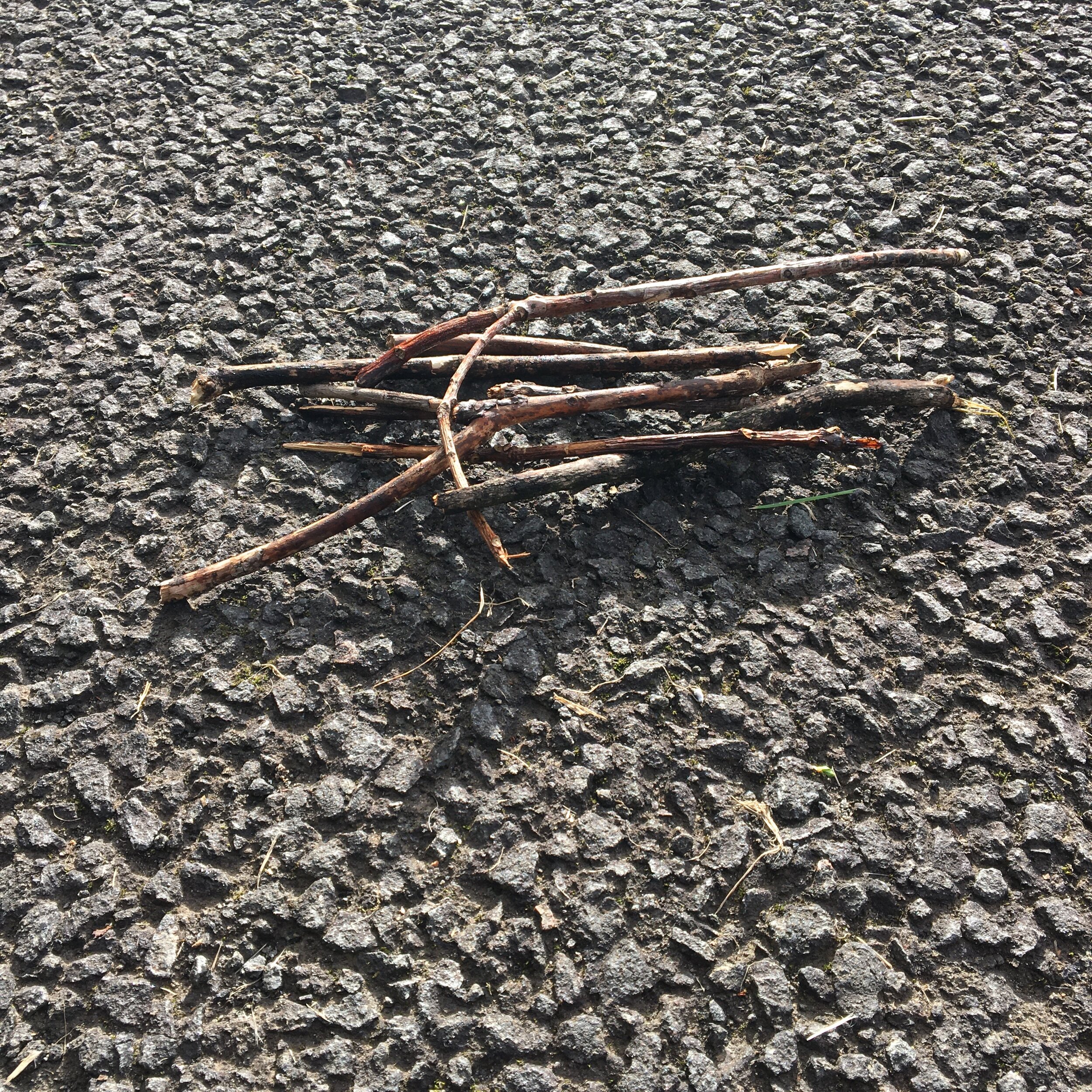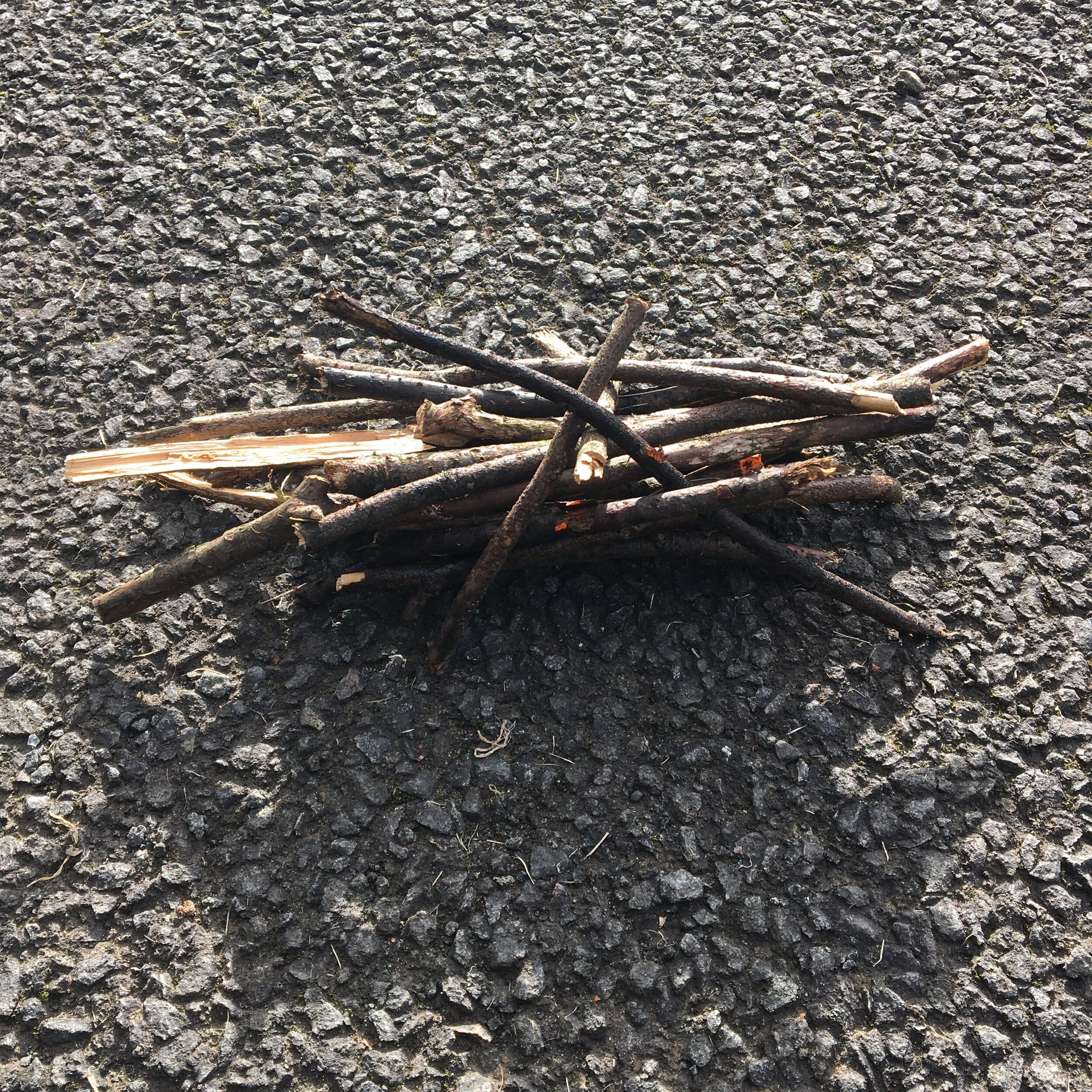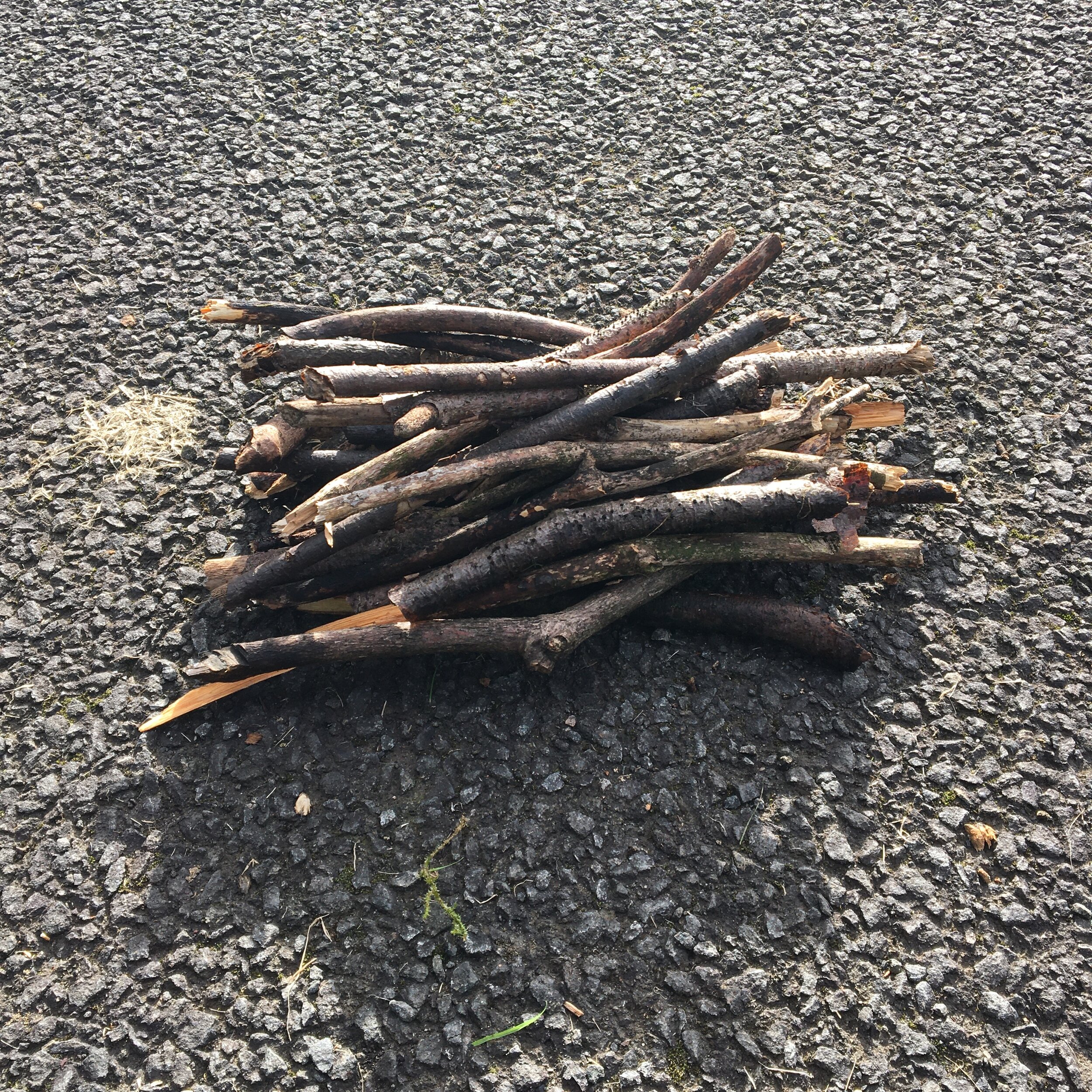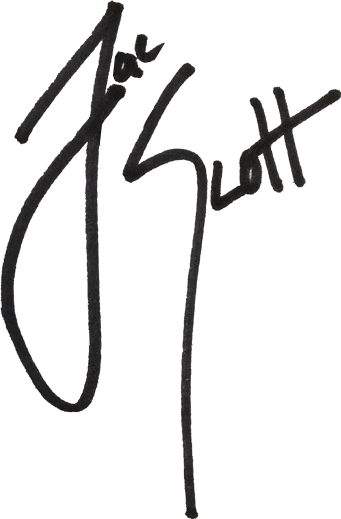Having introduced a suitable definition of a nest, offered my understanding of materials utilised through a series of lists and giving way to my autobiographical connection towards my line of enquiry, I thought it would be interesting to examine how nests are constructed and what their job is. In this blog post, I will share some musical and practical experiments I have undertaken as well as review some research I have done that showcases some of the different styles of architecture employed by two birds that have fascinated me.
I walked to my local green space, Queens Park, with a sense of curiosity tingling. I was inspired by Andy Goldsworthy’s land art practice and wanted to devise something of my own that could have a lifespan in the space - becoming a site that I could visit and return to when considering my enquiry. I set an intention to situate myself in a quiet space of the park, out of the way of the majority of the public and proceeded to collect a variety of materials needed to build my own nest. I wanted to engage and invest in this building process, before informing myself with how birds go about this process with a completely physical range of movements. The rule was that I had only 5 minutes to gather materials in the roughly 20mx20m box I framed myself within. I did not want to cause a scene or draw attention to myself.
The following is an image journal of the materials I managed to gather, before then a video of the building experiment itself.
Materials in rows:
Materials in Piles:




Materials in a Spectrum:
Materials - Road Markings
Materials - Horizontal Spectrum
Materials - Piano Roll
With these materials available to me, I set about building a nest. I had the idea in mind that I would make a piece of music that was the embodiment of a “gentle, generous fidgety dance” which is the way I would characterise the range of movements of a nest builder:
I devised a compositional idea with collaborators Double Bass player Joe Standley, Cellist Sarah McWhinney, Violinist Gudrun Soley SIgurdardottir and guitarist Kenny Cormack to consolidate the experiment I undertook. I framed this micro-composition as having two parts - collecting and then crafting.
I was now in a suitable post-experimental position to examine how nests are constructed. Humans are unusual among mammals in that we build our houses. We are great builders and tend to admire other animals that build. Most birds are excellent builders and their unique skills generally manifest in the form of a nest. Some nests are works of art, others less gracious. Nowadays, we both use natural materials and other times plastic or other artificial materials that do not occur in nature - similar to the ones I have listed in the previous post. Beavers are the only other mammal that build substantial homes. This learning surprised me, as one would assume that mammals with their seemingly larger brains and advantageous dexterity would be far better suited to go about something so intricate.
Professor Mike Hansell speaks of their prowess in the book Avian Architecture:
A bird’s building equipment is largely just the beak. To build even a simple nest with just
a beak would seem to be a bit like trying to make a ham and cheese sandwich with one
hand behind your back. However, birds have the advantage of very flexible necks and
good vision… the feet of some species are important for scratching and occasionally
for holding materials. More unexpectedly, the rounded belly or breast of a bird is used
to mould the interior shape of the nest.
(Hansell, M. 2011)
Hansell’s factual reminder that the bird’s tools to build are its body and its parts put things into perspective for me radically. It offered a choreographic lens through which I could appreciate the craft even further. This cannot be merely a genetic code that is bestowed upon each bird? They surely cannot just know, you know? The excellent skills of birds in building nests are remarkable in at least three ways:
Choreography.
Form and Context.
The instructions on how to build a nest appear to be genetically encoded.
Hmm. I’m not convinced.
I cannot just know how to play guitar? I cannot just know how to drive a car? These physical skills take practice to be able to perform and artfully master - so why do we discount the the role of learning here? Is this because humans don’t trust and want to qualify the skills of our counterparts? I have been reading a lot of books and research to do with nesting and nesting behaviours which kindly suggest that the act of building a nest is merely genetic code. I wish to dispel that as a myth and give credit to the craft. These Long-tailed tits building their nest prove my desire:
I was happy to land on the following offering from the University of Edinburgh:
If birds built their nests according to a genetic template, you would expect all birds
to build their nests the same way each time. However this was not the case.
Southern Masked Weaver birds displayed strong variations in their approach,
revealing a clear role for experience. Even for birds, practice makes perfect.
(Walsh, P. 2011).
Interestingly, the researchers found that this particular breed of individual birds changed their technique from one nest to the next. They also saw that some birds build their nests from left to right, and others from right to left. As birds gained more experience, they dropped blades of grass less often. I want to share the different architectural practices of the Song Thrush and the Bowerbird, comparing and contrasting their nest shape, type, build quality and job through two original illustrations:
Nest #1 - Song Thrush
Nest #2 - Satin Bowerbird
In relation to my enquiry, I am left asking the following, open questions:
How do birds know what to do?
How do humans know what to do?
These are questions that I don’t necessarily know the answer to just now, but an offer to myself to keep in mind as I carry on towards a place of safety.
References:
de Vere, Stephen. 2011. “Long-tailed tits (nest building) in a British hedge” by British Nature Films. Available from: https://www.youtube.com/watch?v=Tx8rJJfZ5Ak&ab_channel=StephendeVere (Accessed October 30 2020)
de Vere, Stephen. 2020. “Long-Tailed Tit Building a Nest in Spring” by British Nature Films. Available from: https://www.youtube.com/watch?v=OwdmfFOwANo&ab_channel=StephendeVere (Accessed October 30 2020)
Goodfellow, Peter; Hansell, Mike. 2011. Avian Architecture. Ivy Press. Page 6.
Walsh, Patrick. 2016. Edinburgh University. Available from: https://www.ed.ac.uk/news/all-news/birds-260911 (Accessed November 1 2020)






